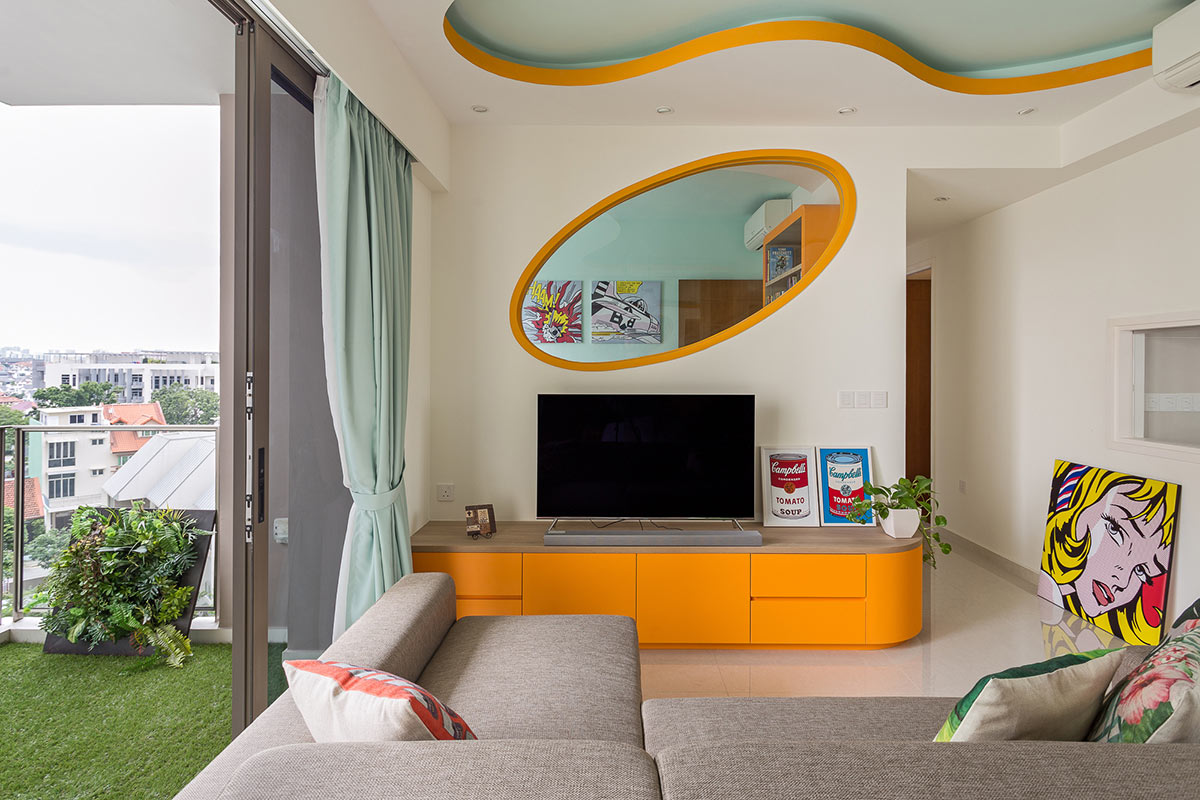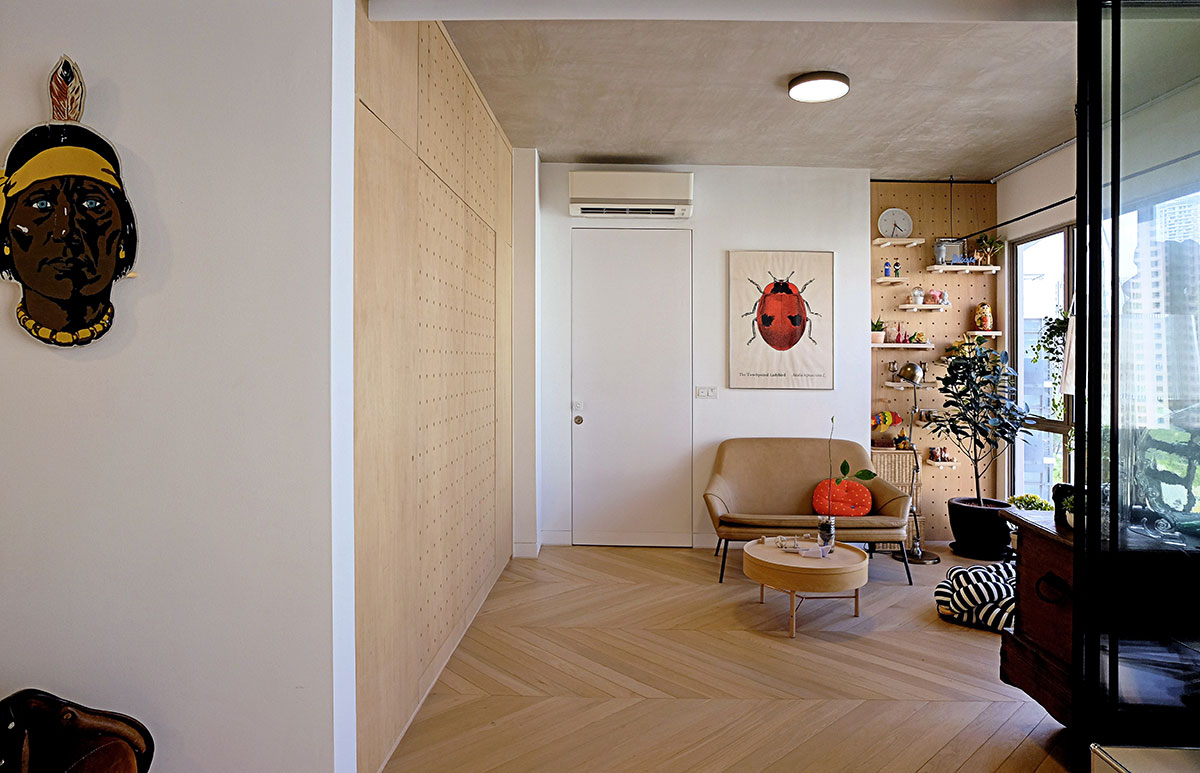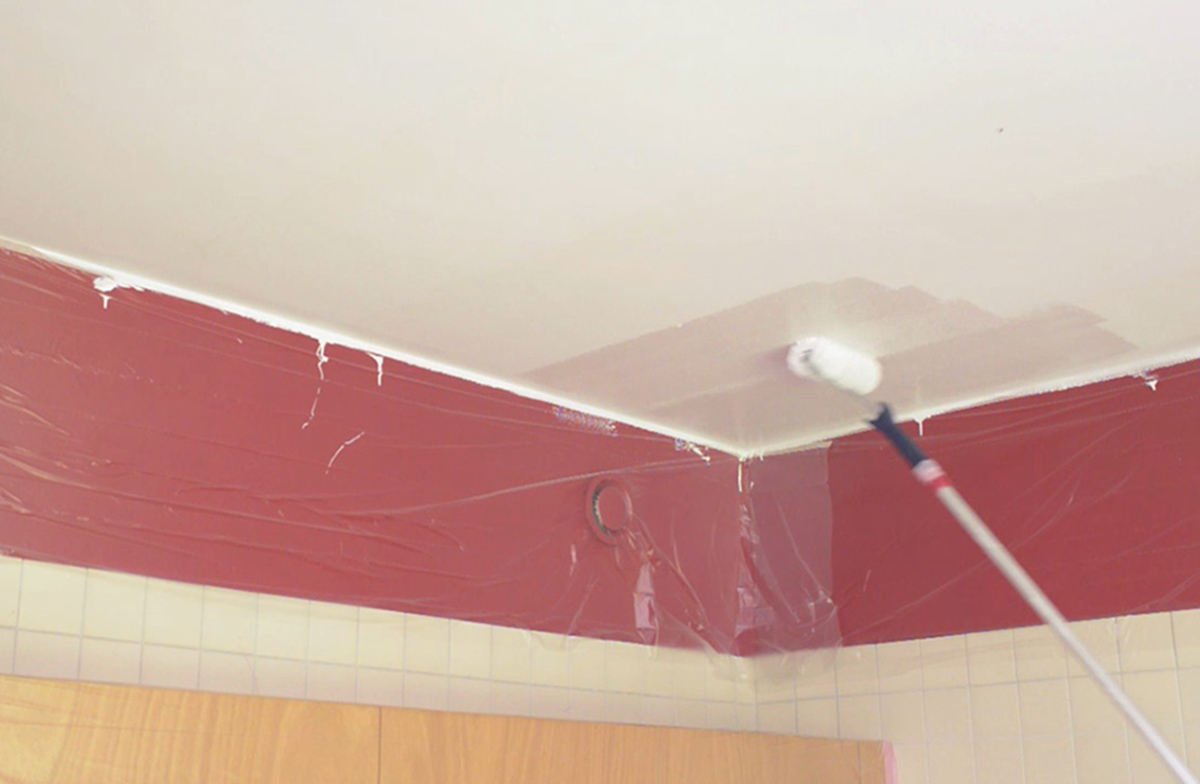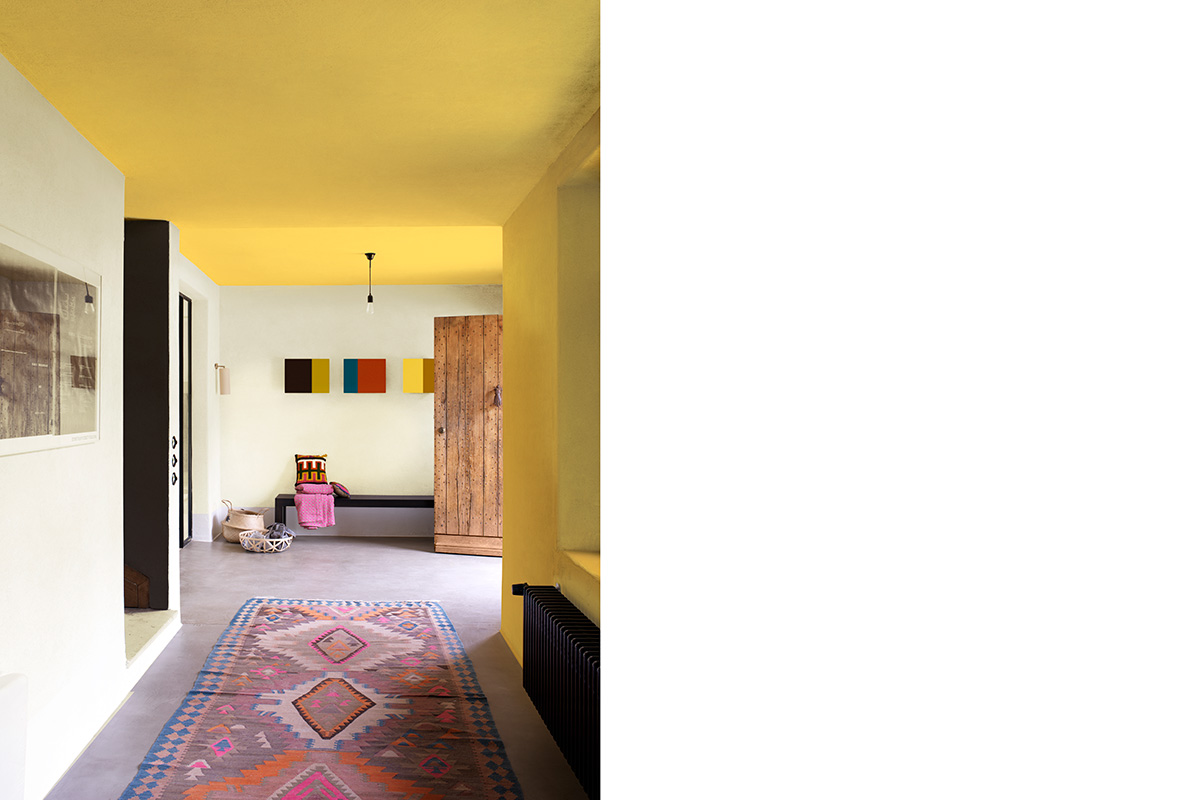When it comes to giving your home a new look, the ceiling is a space that’s often neglected. While it’s tempting to avoid, a murky yellow ceiling can be a complete eye-sore in a newly redecorated room. With a little bit of paint and a tall ladder, a fresh new ceiling is well within reach. We spoke to the experts at Dulux to glean a few tips to keep in mind when painting the ceiling.
Consider the space
Though it’s not the most noticeable feature, the ceiling can greatly impact the overall appearance of the room. So, take a moment and consider the space you’re working with. For example, if you have a low ceiling and want to visually raise your ceiling height, stick to light, cool hues, such as blues, greens and cool-toned neutrals. If you have a high ceiling and wish to create a more intimate feel, opt for darker hues at the warm end of the spectrum, such as reds, yellows and warm neutrals. A shade of rich mulberry brings out the warm tones in a taupe feature wall, helping to create a cosy atmosphere.

Image credit: Free Space Intent
Pay attention to your finish
In addition to the shade, also take a moment to consider what paint finish you’d like. Majority of the time, a matte finish is recommended as it does not reflect light and camouflages imperfections on your ceilings.
However, if you’re looking to make a bold statement, a high-gloss ceiling can create a striking look. To minimise imperfections, opt for a darker hue. Take it up a notch by adding bold graphic elements, like stripes or geometric patterns, or using a special effect paint to create a ceiling that will really make an impact. The Dulux Ambiance collection offers an exclusive range of premium interior and special effects paint to truly personalise your walls. From marble to metallics, express your personality with infinite unique combinations of rich colours and special effects.

Image credit: AWA Design Office
Prep before you paint
As ever, good preparation is key to ensuring a perfect finish. Wipe the ceiling with a damp cloth to remove dust and be on the lookout for any troublesome cobwebs and dust.
If your ceiling shows any signs of discolouring or water staining (from a previous upstairs leak, for example), we recommend applying a sealer such as Dulux Sealer to the affected areas. Tip: In a hot and humid climate like Singapore, avoid discolouration from mould with the Singapore GreenLabel certified Dulux Mouldguard, equipped with anti-mould properties that are effective against most species of mould. It is low in odour, even when freshly painted.

Image credit: Dulux
Get colouring
“Cut in” around the edges of your ceiling with a medium sized brush (a 2-inch synthetic bristle brush is ideal). You may want to use masking tape where your walls meet the ceiling so you get the neatest result possible. Once you’ve cut in, you can start applying paint to the ceiling using a roller. If your ceiling is particularly high, you may need to use an extension pole to save climbing up and down a ladder. If you have a textured ceiling, we recommend that you use a deeper pile roller.
You’re almost there! Apply a second coat once the first has completely dried and use a small roller (rather than a brush) to touch up any uneven areas. Now sit back and enjoy the fruits of your labour.

Image credit: Dulux



